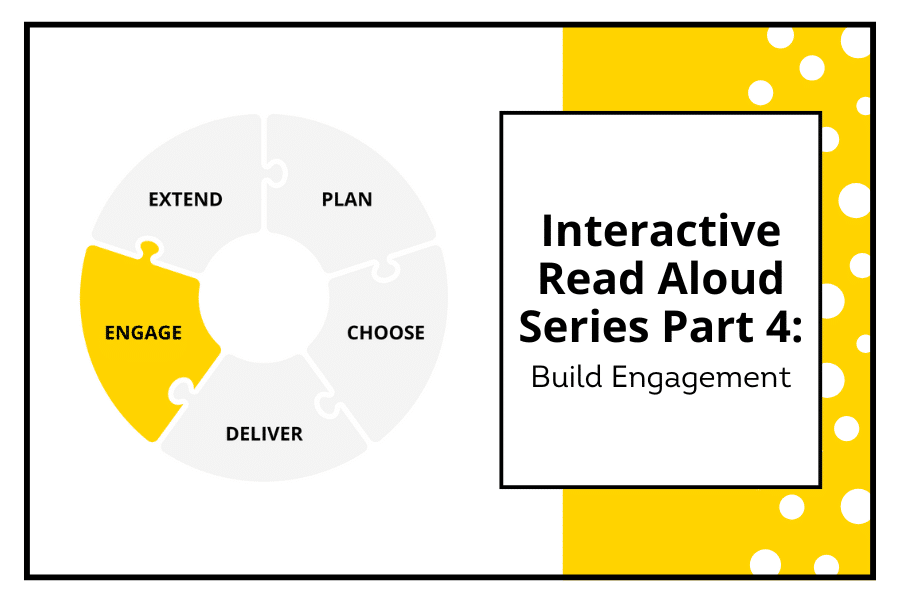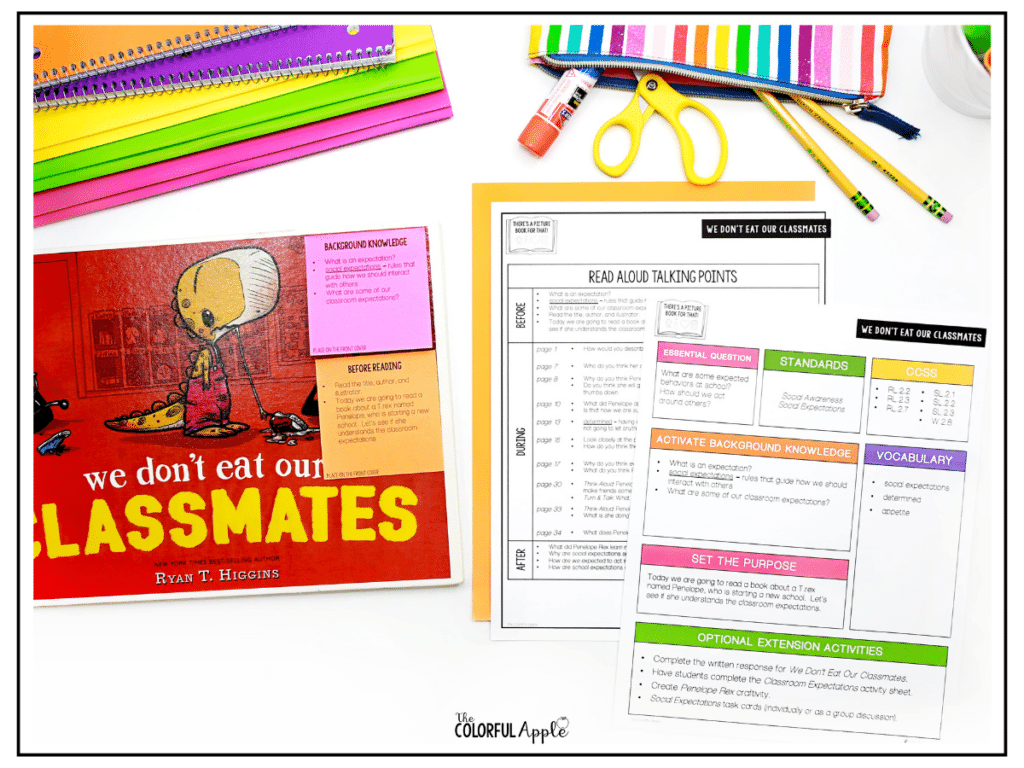Interactive Read Aloud Series Part 4:
How to Build Engagement During a Read Aloud

As teachers, we all dream of those magical read aloud moments where every student is completely engaged, thinking deeply, and eager to participate. While these moments might seem elusive, especially with our packed schedules and diverse learner needs, they’re absolutely achievable with the right strategies and preparation. Let’s talk about some read aloud engagement strategies.
Why Engagement Matters in an Interactive Read Aloud
Interactive read alouds are about more than just sharing a story – they’re opportunities for students to develop critical thinking skills, build vocabulary, and engage in meaningful discussions. When students are truly engaged during read alouds, they’re not just listening; they’re predicting, questioning, connecting, and constructing meaning alongside their peers.
Read Aloud Engagement Strategies
Turn and Talk
One of the most powerful tools in our read aloud toolkit is the turn and talk strategy. This approach ensures that every student, not just our confident hand-raisers, has an opportunity to share their thinking. By incorporating regular turn and talk moments, we:
- Give students time to process their thoughts
- Provide practice with academic language
- Build confidence in sharing ideas
- Create opportunities for peer learning
When implementing turn and talk, choose strategic moments in the text where student discussion will deepen understanding. Mark these spots with sticky notes during your preparation to ensure smooth transitions.
Stop and Jot
For our reflective thinkers and students who need processing time, stop and jot activities are invaluable. This strategy involves having students quickly write or draw their thoughts on sticky notes or in their reader’s notebooks. It’s particularly effective for:
- Building accountability during discussions
- Supporting different learning styles
- Providing evidence of student thinking
- Creating artifacts for assessment
Hand Signals
Quick comprehension checks shouldn’t interrupt the flow of your story. Hand signals offer a silent, efficient way to gauge understanding and maintain engagement. Consider implementing signals for:
- Agreeing/disagreeing with a character’s choice
- Making predictions
- Showing understanding of vocabulary
- Indicating connections to the text

The Power of Think-Alouds
Think-alouds transform passive listening into active meaning-making by making our reading strategies visible to students. When we share our thinking process out loud, we’re modeling what proficient readers do naturally.
Effective think-aloud moments might include:
- Questioning the meaning of an unfamiliar word
- Making connections to background knowledge
- Sharing predictions based on text evidence
- Discussing author’s craft choices
Setting Up for Success
Preparation Is Key
Success in interactive read alouds starts with thorough preparation. Before your read aloud:
- Preview the text and mark discussion points
- Prepare your anchor chart materials
- Plan your engagement strategies
- Set up your reading area thoughtfully
- Have all necessary materials ready
Establishing Clear Expectations
Students thrive when they understand exactly what’s expected of them. Create and display anchor charts that outline:
- Voice levels during different activities
- Partner discussion protocols
- Material handling procedures
- Transition signals
- Active listening behaviors

Using Consistent Signals
Develop a consistent system of signals to manage your read aloud smoothly:
- Tap head = thinking time
- Finger to lips = silent thinking
- Meeting pointer fingers = turn and talk
- Chime = return attention to teacher
Strategic Seating
Thoughtful seating arrangements can prevent management issues before they arise:
- Assign turn-and-talk partners strategically
- Consider sight lines to the book
- Plan for easy transitions
- Account for student needs and dynamics
Maintaining the Balance
Remember that the goal isn’t to stop and discuss every page. Choose 2-3 strategic moments where deeper interaction will enhance understanding without disrupting the flow of the story. Think about your read aloud like a symphony – there should be a natural rhythm between reading, discussion, and reflection.
Troubleshooting Common Challenges
Even with careful planning, challenges can arise. Have plans in place for:
- Absent partners
- Interruptions during reading
- Material management issues
- Attention dips
- Uneven participation
Practice Makes Progress
Like any classroom routine, engagement strategies need to be taught, modeled, and practiced. Dedicate time at the beginning of the year to:
- Model and practice each strategy
- Role-play appropriate and inappropriate behaviors
- Create anchor charts together
- Establish clear routines
- Practice transitions
Review these expectations after breaks and whenever you notice engagement starting to slip.
Final Thoughts
Building engagement during interactive read alouds isn’t about implementing every strategy at once. Start with one or two approaches that feel manageable, and gradually add more as you and your students become comfortable. Remember, the goal is to create a safe, engaging space where every student feels valued and excited to participate in the reading experience.
By thoughtfully implementing these strategies and maintaining consistent expectations, you’ll create read aloud experiences that not only engage your students but also help them develop into confident, thoughtful readers.
